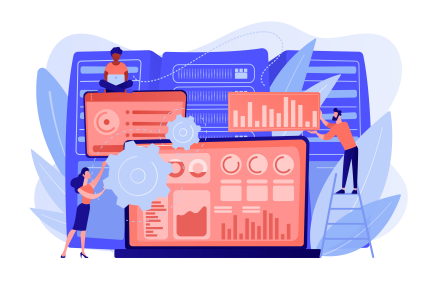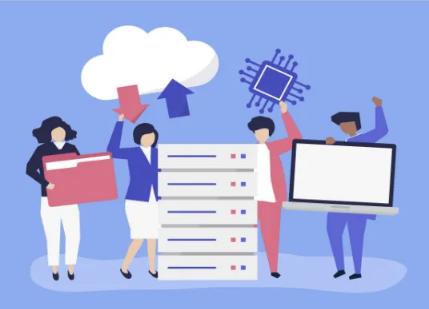
Feb 28, 2023
“Data engineering is essential in the field of data science and analytics because it involves the process of transforming raw data into a format that can be easily analyzed and interpreted. Data engineers are in charge of creating and maintaining the data infrastructure on which data scientists and analysts can rely.”
“Difference Between Data Engineering and Data Science: Data science and data engineering are two distinct but interrelated disciplines. Data science involves using statistical and machine learning techniques to analyze and extract insights from data. Data engineering, on the other hand, is concerned with the design and management of the data infrastructure and systems that enable data science and analytics.”
“Data Engineering’s role in Data Science and Analytics: Data engineering is required for data science and analytics to be possible. Data engineers create and maintain the data infrastructure on which data scientists and analysts rely upon.”
“Data Engineering Best Practices: Data engineering requires a set of best practices to ensure data quality, reliability, and security. Collaboration across teams, effective use of tools and technologies, and a focus on data quality and security are characteristics of successful data engineering projects.”
“Data Engineering and the Future of Data Science and Analytics: Data engineering will be essential in the future of data science and analytics. As organizations rely more and more on data to inform their decision-making processes, effective data engineering will be critical to ensuring that data is collected, processed, and stored correctly.”

Feb 27, 2023
“AI Literacy is the ability to understand the basics of what an AI is, how it works, and what the strengths and limitations of the technologies are. The AI market is projected to be 190 billion by 2025, and the average human will interact with at least one AI in their daily life.”
“Building employee skills to eliminate literacy shortfalls can allow brands to achieve their strategic data-driven business goals and undertake AI projects successfully. Artificial intelligence is rapidly accelerating its adoption across industries, and we interact with it often without even realizing it.”
“Artificial intelligence (AI) has the potential to transform how we live, work, and interact with each other. AI has the potential to help tackle some of the toughest global challenges, including displacement, hunger, infectious disease outbreaks, and climate change.”

Feb 21, 2023
“Only 13% of data science projects make it to production, which means that 87% of models built never get deployed. The disconnect between data science and engineering is a major contributor to this.”
“Here’s a scenario to help you understand the importance of model deployment. Yua is an Osaka University student studying Computer Science in her Junior Year. Yua is interested in Machine Learning and Artificial Intelligence, and she decides to build a model that can answer questions when context is provided for her demo project.”
“The final code should look like this: [Code snippet provided]. Finally, save the file as main.py, open your terminal, and run python main.py to launch your flask application.”
“To deploy the app to AWS, you must first create and launch an instance. If you’re not sure how to set up an EC2 instance, you can follow this [step-by-step guide].”
“To keep your server online at all times, set gunicorn to restrart or reboot whenever the EC2 instance is restarted. [Code snippet provided].”
“To receive external requests, you’ll need a webserver like NGINX to accept and route them to Gunicorn. To get started with the NGINX server, [Instructions provided]. After completing these steps, restart NGINX with ‘sudo systemctl restart nginx’, and your application should be operational.”
“You successfully deployed a Hugging Face machine learning model on an AWS EC2 instance using Flask in this article. To learn more about AWS, you can do so by visiting their documentation here.”

Feb 20, 2023
“In the quest for digital transformation, staying true to your vision is paramount. Netflix’s enduring vision to make movie-watching easier and affordable serves as an inspiring example. As you embark on your digital transformation journey, keep this in mind.”
“Digital transformation demands innovation. Don’t limit yourself to conventional best practices; focus on solving modern customer problems. Your competitors may have their strategies, but your unique solutions could outshine them.”
“An open mind is your ally in digital transformation. Unexpected problems and hidden solutions await those who embrace flexibility. Follow Netflix’s lead in serving both the collective and individual needs of customers to build a better, stronger company.”
“Target’s success story emphasizes the importance of employees in digital transformation. Prioritizing employee well-being and work quality can be the key to a successful transformation journey.”
“Customers hold the keys to market insights. Prioritize customer feedback as you undergo digital transformation. Discover what truly matters to them for a more beneficial transformation.”
“Digital transformation is a journey that requires patience. Measure the impact of your actions carefully and make necessary adjustments to realize your vision with technology.”

Feb 13, 2023
“Virtual reality is revolutionizing data visualization, making complex data structures more understandable. Explore how VR can help your data storytelling and decision-making.”
“Virtualitics offers explainable AI solutions that simplify complex data and suggest optimal 3D visualizations. However, the future of VR and AR in data analytics hinges on improved headset resolution and innovative visualizations.”
“The demand for AR/VR data visualization is surging, but much of the world’s data remains untapped. Learn how immersive technology enhances data analysis and transforms decision-making.”
“Immersive data visualization through AR and VR is on the rise. These technologies elevate data research, predict future business outcomes, and foster collaborative exploration.”
“Discover the potential of AR and VR in data analytics. These immersive platforms help users step inside their data, making complex information more accessible and engaging.”
“Traditional 2D data tools struggle with today’s complex datasets. AR and VR technologies simplify data understanding, making it accessible to a broader audience, beyond data scientists.”
Feb 6, 2023
“Robotic process automation is reshaping business operations by automating tasks and reducing staffing costs. Learn how RPA, alongside cognitive technologies, is driving intelligent automation and its exponential market growth.”
“RPA projects are quick to implement, low-risk, and minimize operational errors. Discover how RPA can potentially replace a significant portion of full-time employees, leading to better data quality and change management.”
“Despite initial apprehensions, RPA is proving its worth in business. RPA software performs tasks efficiently, creates jobs, and adapts to business expansion. Plus, its implementation is straightforward and cost-effective.”

Jan 30, 2023
“Edge computing brings processing closer to data sources, enabling real-time actions and innovative human experiences. Explore its importance, architectural shift, and current adoption trends.”
“The era of intelligent edge, driven by 5G, holds promises for autonomous vehicles, smart cities, and more. Learn how edge computing will process 75% of enterprise-generated data by 2025 and the role of collaboration in its success.”
“Edge computing’s future hinges on hardware cost and standardized software development. Discover how it offers faster results than the cloud and how the lines between edge computing and IoT are blurring.”

Jan 23, 2023
“ChatGPT represents a pivotal moment for AI, shifting from utilitarian applications to creative and expressive tasks. Human-machine collaboration is on the rise, offering opportunities for enhanced performance and personalization.”
“ChatGPT’s conversational abilities are impressive, but it has limitations and may not always provide accurate information. Trusting its answers should be approached with caution, much like other sources of information.”
“ChatGPT’s versatility extends to various domains, from coding assistance to AI art generation. It has the potential to revolutionize education tech and challenge traditional evaluation methods.”

Jan 17, 2023
Apache Kafka, a distributed streaming platform, is designed for real-time data pipelines and streaming applications. Dive into its architecture, including topics, partitions, brokers, producers, and consumers, and discover its capabilities for handling large volumes of data and enabling real-time data processing

Jan 10, 2023
Stateful stream processing involves processing continuous data streams while maintaining a current state. Discover how it works, its applications, advantages like contextual information and real-time decision-making, as well as potential disadvantages such as complexity and scalability challenges.









